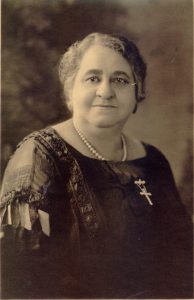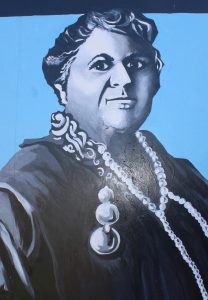by Sam Craig
Maggie L. Walker is commonly known as the first African-American female banker. That may be what the history books say, but if you ask Ethan Bullard it is not the most important thing for people to know about her.
“Maggie Walker was from a single parent household, disabled from diabetes and was a black female in a white man’s world,” Bullard said. “Yet in the face of all of that adversity she was able to achieve so much. That is a lesson that anyone can learn from.”
Bullard is a Park Ranger stationed at the Maggie Walker House National Historic Site. His duties there include leading tours through Walker’s historic home, running the visitor center and making sure Maggie Walker’s impact lives on.
“She is a powerful figure for people growing up in Richmond because she had a unique approach to minority empowerment. By working towards the economic independence of women of color, she helped create the black middle class that supported the modern civil rights movement. Anyone can look up to her.”
And the community of Jackson Ward does. Just last July a statue of Walker was erected on Broad Street in celebration of her 153rd birthday. “It was an emotional day, the day her statue went up,” recalls another black female business owner in the community, Mahasin Shakoor, of Shakoor’s Merchandise.
“This community rallied around Maggie Walker’s statue,” said Ajena Rogers, head of the Maggie Walker National Historic Site, “They questioned what age should she be depicted at, where was the best location, and which artist should design her, but no one ever questioned that we should have the statue.”
Herman Baskerville, owner of Big Herm’s Kitchen, made a simple but eloquent point. “It’s powerful to have an example of a black business for the community.”
However, it is not always easy to preserve the past.
On the far side of an interstate highway that bisected Jackson Ward in the 1950s, the St. Luke building is currently under renovation, set to become apartments with a medical laboratory service on the ground floor. First constructed in 1902, the building housed Maggie Walker’s pioneering Penny Bank, as well as the Independent Order of St. Luke (IOSL), a fraternal organization designed to serve the needs of the African American community in Jackson Ward through life insurance and burial support.
Yet many people, including park rangers at the Walker House, insists that Maggie Walker’s legacy is more than any historical building. “I had a woman come in here in a wheelchair due to disability from diabetes,” recalled Mark Wilcox, a National Park Ranger. “She left in tears because she felt so empowered by Maggie Walker’s story.”
“I think that is why the community rallied around Maggie Walker’s statue” Ajena Rogers, head of the historic site, adds, “They questioned what age should she be depicted at, where was best location, which artist should design her, but no one ever questioned that we should have the statue.”





